Unpublished Work Archive

This page contains my unpublished reports, either from classes or my personal projects.
Table of contents
- Recent advances in GaN-based semiconductors for millimeter-wave and terahertz applications (2025)
- Design of a two-stage opeartional transconductance amplifier: Lessons learned by an inexperience designer (2025)
- 6-dB branch line directional coupler (2025)
- Extraction of transmission lines parameters from generic microwave measurements using a vector network analyzer (2025)
- Coupled-mode theory and its applications in nonlinear optical systems with the analysis of frequency-modulated optical parametric oscillation (2024)
- Integrated thin-film lithium niobate platforms for terahertz photonics: A proposal (2024)
- A review of thin-film lithium niobate platforms for terahertz photonic integrated circuits (2024)
Recent advances in GaN-based semiconductors for millimeter-wave and terahertz applications (2025)
 | (PDF) Millimeter-wave (mmWave) and terahertz (THz) technologies have witnessed significant progress over the past decade. This progress is due to advances in semiconductor materials, device engineering, circuit design, and system-level integration. These developments have enabled emerging applications in ubiquitous communications, high-resolution imaging, and spectroscopy. III–V compound semiconductors, particularly gallium nitride (GaN), have become indispensable for high power and high-efficiency mmWave/THz front ends. This paper reviews brief history and recent advances in radio-frequency (RF) semiconductors with an emphasis on GaN-based innovation that extends operation toward the mmWave and THz regimes. Key topics include the physical principles of GaN-based devices, covering high-electron-mobility transistors (HEMTs), diodes, and photonic components, as well as their epitaxial and process innovations that enhance cutoff frequency and power performance. The review also discusses emerging trends in heterogeneous and CMOS-compatible integration. The review concludes with an outlook on the remaining challenges and opportunities for GaN technologies in future mmWave and THz applications. |
**For ECE 396K - Ultra-Large-Scale Integration Techniques
Design of a two-stage opeartional transconductance amplifier: Lessons learned by an inexperience designer (2025)
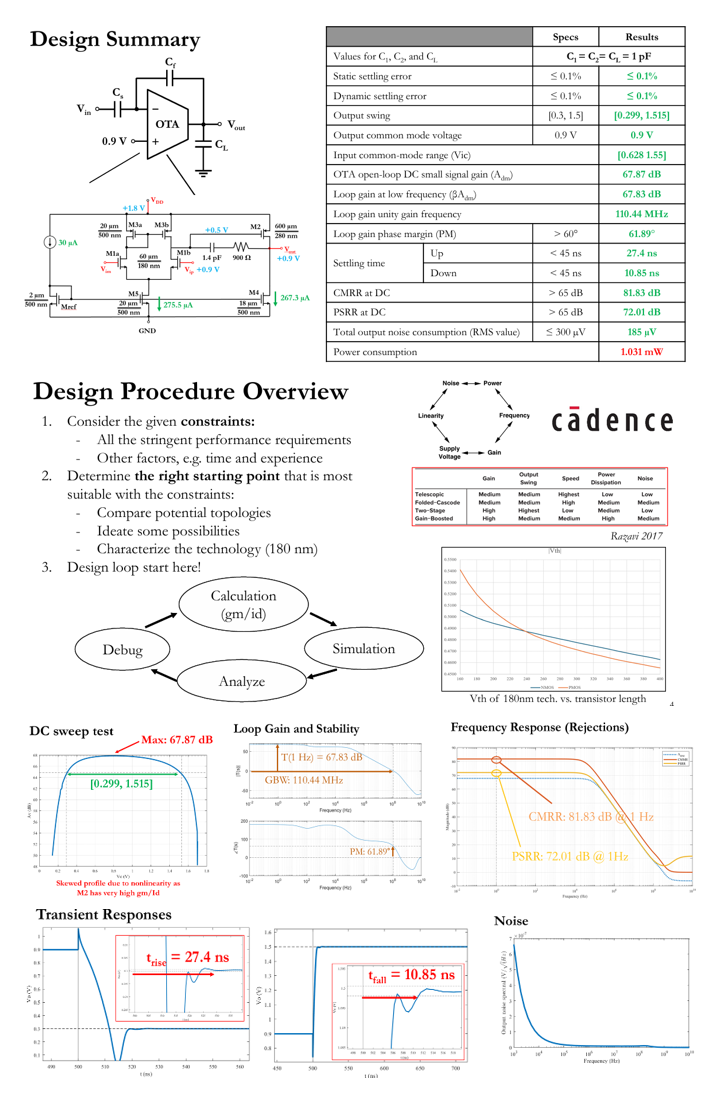 | (PDF) These presentation slides summarize the design of a two-stage operational transconductance amplifier that meets all the given stringent requirements in terms of voltage swing, gain, stability, rejection, and noise performance. The slides highlight key design steps, considerations, observations, and lessons from this individual final design project. Notably, the design successfully meets all requirements, which are rarely achieved in the class. |
**For ECE 382M - Analog Integrated Circuit Design
6-dB branch line directional coupler (2025)
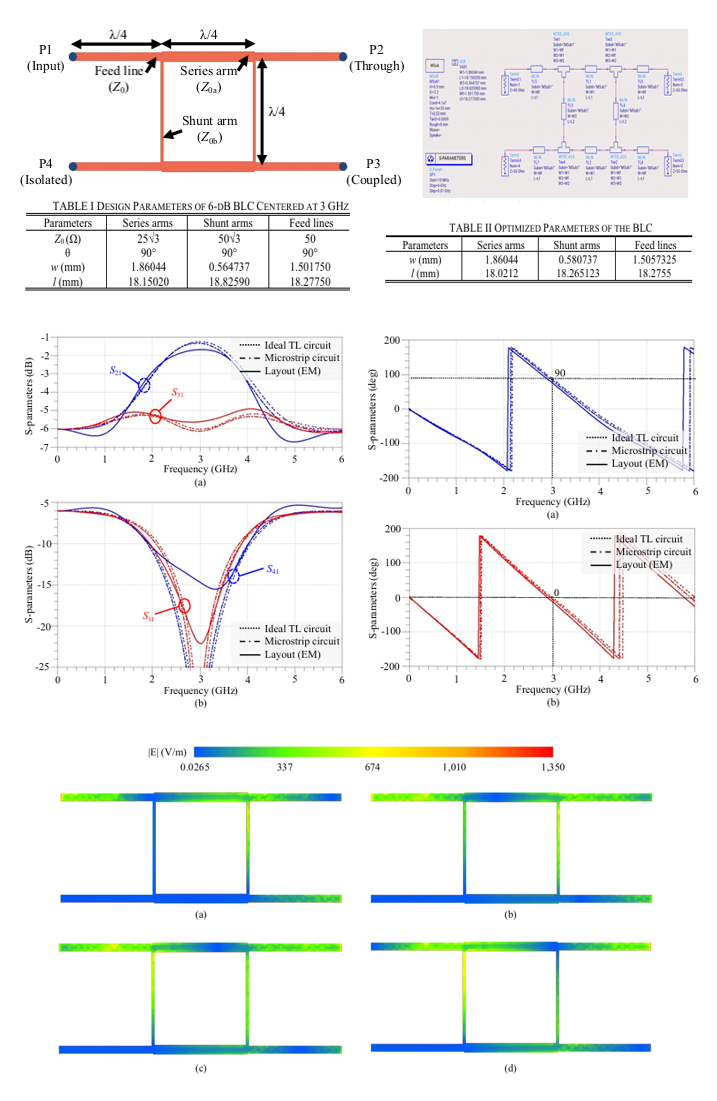 | (PDF) This report presents a systematic approach for designing a 6 dB branch-line coupler (BLC). The design process begins with the synthesis of an ideal transmission line network using even–odd mode analysis, followed by implementation and simulation of a microstrip realization in Advanced Design System (ADS). Electromagnetic (EM) simulation is then performed using Keysight RFPro to validate the layout. The final design achieves a coupling of 5.8 dB at 3 GHz in the EM simulation. The simulation-based experiment provides an insight into the design and implementation of a BLC. While even–odd mode analysis provides accurate predictions for ideal transmission line circuits, increased realism in simulations—from microstrip circuits to EM layout simulations—reveals growing discrepancies due to electromagnetic interactions and structural discontinuities. Nonetheless, the theoretical synthesis serves as a reliable starting point, requiring only minor tuning to achieve near-optimal results. In addition to demonstrating a systematic design process, the study also highlights a key characteristic of the BLC: the 90° phase difference between the through and coupled output ports. |
**For ECE 383V - Microwave and Radio Frequency Engineering
Extraction of transmission lines parameters from generic microwave measurements using a vector network analyzer (2025)
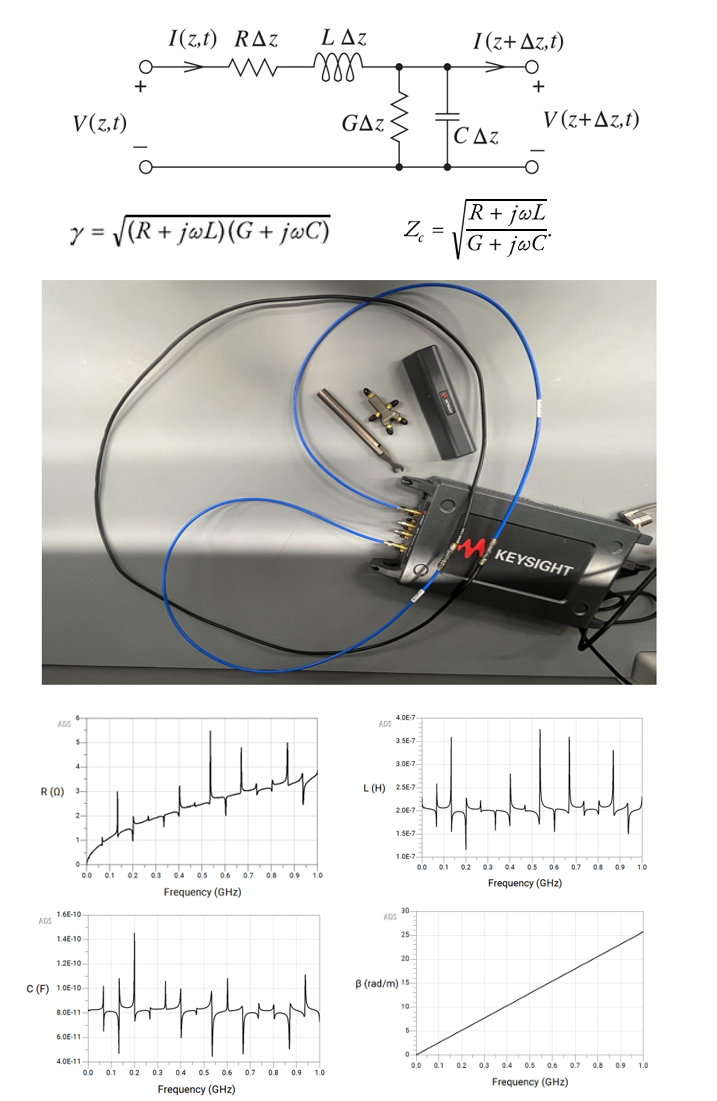 | (PDF) A microwave transmission line plays a crucial role in microwave communication systems, serving as the physical conduit for efficiently transmitting high-frequency signals between the transmitter and the antenna. As modern circuits and systems become increasingly fast and complex, accurate modeling of interconnects is essential for signal integrity analysis and design. In this lab, we will apply transmission line theory to model a real coaxial cable through hands-on RF measurements. In this experiment, I thoroughly examine the extraction of important transmission line parameters from the measurable S-parameters under the low-loss and low-reflection assumptions. Although the achieved results contain several spurious values potentially due to poor connections or defects in the transmission line under test itself, the obtained results are reasonable and align well with theoretical predictions. Moreover, our findings suggest that the quality of RF measurement setup strongly influences the accuracy of the study. |
**For ECE 383V - Microwave and Radio Frequency Engineering
Coupled-mode theory and its applications in nonlinear optical systems with the analysis of frequency-modulated optical parametric oscillation (2024)
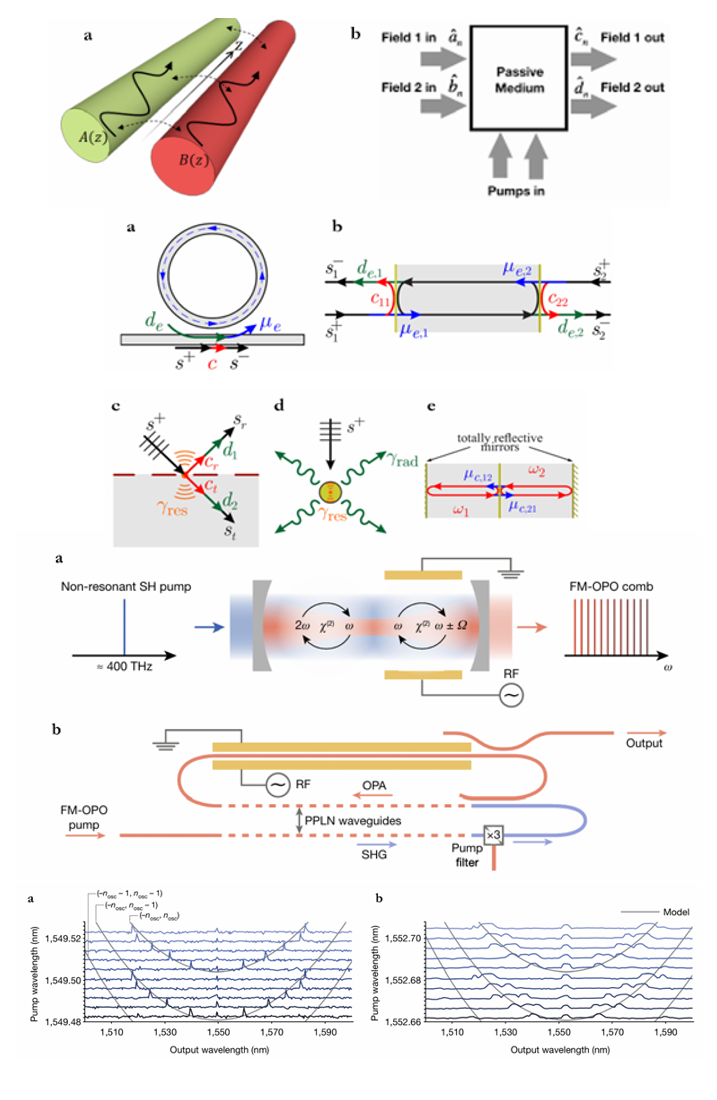 | (PDF) This paper reviews the fundamentals of coupled-mode theory (CMT), starting with the concept of electromagnetic modes and their coupling mechanisms, before narrowing the focus to temporal CMT (TCMT). It examines how TCMT simplifies the analysis of resonant systems by representing them as sets of reduced-order components. The paper also briefly addressed the formation of coupled-mode equations (CMEs) in both linear and nonlinear systems, along with a discussion of perturbation theory. Practical examples, including the analysis of the FM-OPO, illustrate the applicability and effectiveness of TCMT in modeling vibrational systems. Because CMT is perturbative, small corrections can be added to account for weak interactions or deviations. This makes it a flexible framework for improving models and dealing with systems that are getting more complicated. By systematically combining such intuitive strategies with state-of-the-art computational methods, it is possible to develop a universal tool for accurately predicting and designing advanced materials, systems, or technologies tailored to diverse applications. |
**For ECE 383P - Ultrafast and Nonlinear Optics
Integrated thin-film lithium niobate platforms for terahertz photonics: A proposal (2024)
 | (PDF) The proposal seeks to overcome current limitations, such as cost, size, and complex fabrication processes, that hinder the widespread utilization of highly promising Terahertz (THz) technologies. The core objective is to develop a miniaturized platform for chip-scale THz systems by exploiting the integrated thin-film lithium niobate (TFLN) platform, which is highly suitable due to its exceptional optical properties and inherent strong Chi-(2) nonlinearity, crucial for efficient nonlinear operations like THz generation via difference frequency generation. Achieving this requires a holistic design approach that interconnects integrated photonics, THz propagation manipulation, and application-specific architecture. Ultimately, the successful realization of these compact, efficient, and accessible TFLN-based THz solutions is expected to drive mainstream commercialization, accelerate technological progress, and democratize innovation across fields ranging from fundamental research to high-speed wireless communication and biomedical imaging. |
**For ECE 396V - Advanced Semiconductor Nanotechnology
A review of thin-film lithium niobate platforms for terahertz photonic integrated circuits (2024)
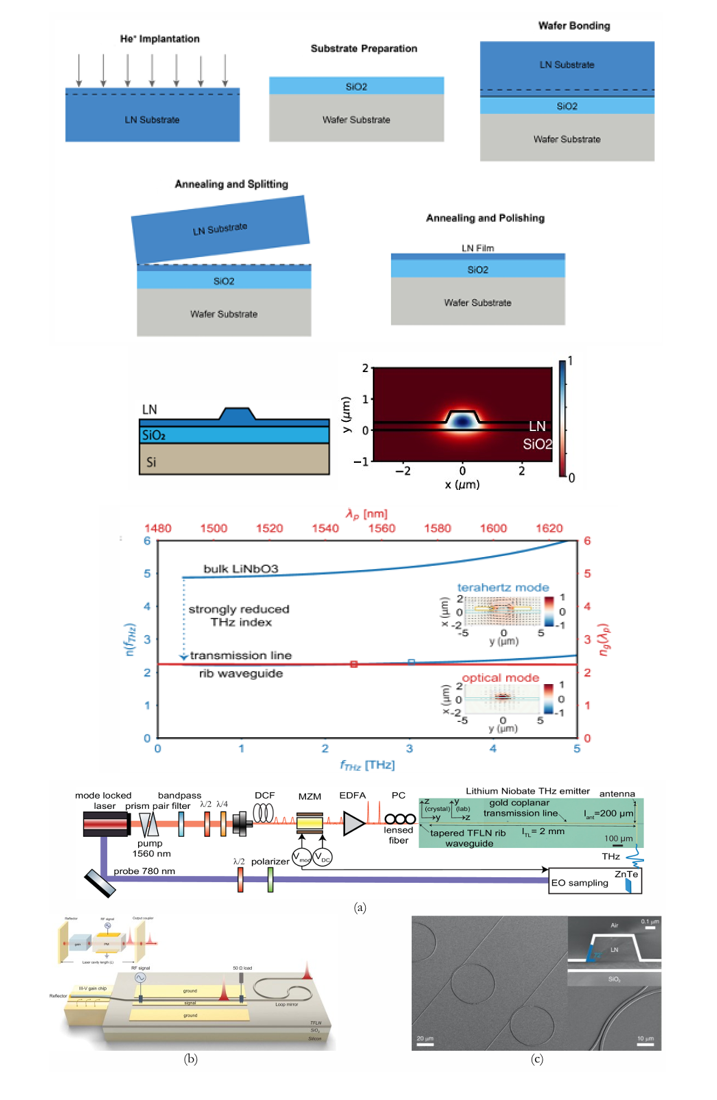 | (PDF) This review covers various essential aspects of the TFLN platform for THz PICs. An emphasis is placed on the THz transmission line to highlight their role in achieving efficient THz conversion. Although the state-of-the-art THz transmission line on the TFLN platform presented here covers an octave of the THz band while overcoming the bulkiness and limitations of a bulk crystal, it is evident that a fully integrated THz PIC on the TFLN platform that contains onchip optical components is needed to make the THz system practical for wide-spread practical uses. This requirement, along with the inherent physical challenges of nonlinear photonics, calls for advancements not only in the RF photonic domain but also in material preparation, device fabrication, and system integration. Notably, the properties of TFLN open doors to interdisciplinary research in existing microelectromechanical systems as well. |
**For ECE 396V - Advanced Semiconductor Nanotechnology